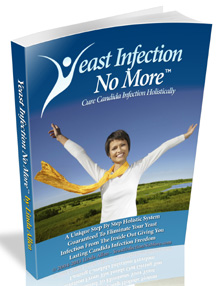Yeast Infection - Do you Have One?
Free Video Reveals 1 Weird Tip To Quickly Cure Your Candida Overgrowth & Enjoy Permanent Freedom From Yeast Infections In As Little As 12 Hours - Guaranteed!
>> Yeast Infection Guaranteed Treatment Click Here <<
What is a Yeast Infection?
Maybe you have never heard of it. Maybe you just discovered that you have one and you are wondering what are you suppose to do. The first step would be to better understand what you are up against. First don?t worry; a yeast infection is not a very serious condition although recurrent yeast infections can be a symptom of an underlying condition.
A yeast infection is a bacterial infection. They can occur due to various reasons. Some of the most common ones are:
- Transference through sexual intercourse
- Steady Usage of antibiotics
- Wrong diet
There are other factors such as:
- Pregnancy
- Stress
- Wrong Clothing
- Hormonal Imbalance
- Use of Scented Feminine Hygiene products
- Douches
These are only the most commons reasons why yeast infections occur. Other less common factors can be the cause of a yeast infection. Factor such as:
- Weaken immune system
- Transmitted through sexual disease
- Prolonged contact with semen
You should know that even though a yeast infection can be transmitted sexually it is not considered a sexual transmitted disease.
What are The Symptoms?
The first thing you should do if you suspect you are suffering from yeast infection symptoms is to consult a physician just to rule out any other condition.
Here are some of the symptoms associated with yeast infections:
- intense itching
- rash
- burning sensation
- vaginal discharge
- pain during sexual intercourse
- swelling of the vulva
- redness around the affected area
- frequent urination
One of the most common sign of a yeast infection is the vaginal discharge. It often takes the form of a thin watery or milky substance. It can be egg white in appearance, firm and yellowish or it can have a cottage cheese-like texture.
There is often an odour associated with it. The odour tends to be acrid and pungent. Sometimes it can also be odourless in some cases.
How do you treat it?
Usually it can be treated with prescription medications and over the counter medication. There is also a wide variety of natural treatments that are extremely effective.
Keep in mind that there is always a chance that it can occur again. The best thing to do is to take preventive measures and always be aware that it can be transmitted through sexual intercourse with an infected partner.
In other words a Yeast infection if treated properly can be cured quite easily although in some cases it can take quite a bit longer. All you need to do is take the necessary precautions and preventive measures and you should be able to overcome it with little problems.
Visit our website for more information about yeast infection treatment and yeast infection cure. If you liked our article about yeast infection symptoms visit our website for more quality articles. We help you understand it and treat it.
Labels: breast_yeast_infection, canine_yeast_infection, male_yeast_infection, oral_yeast_infection

